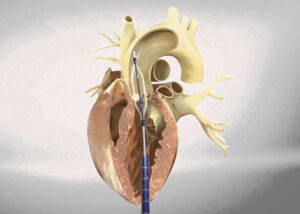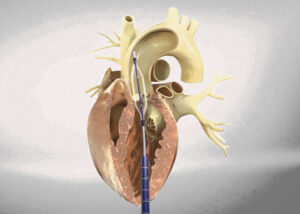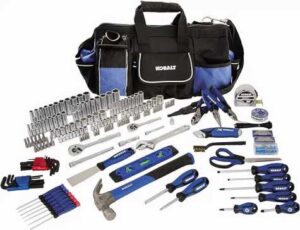
Heat Rash Prevention and Treatment: Your Go-To Guide for Cool, Happy Skin
Heat rash, also known as prickly heat or miliaria, is a common skin condition that can affect anyone, especially during hot and humid weather. It often shows up as small red bumps or blisters and can cause itching, tingling, or a prickly sensation. While it’s not usually serious, it can be uncomfortable and annoying. The good news is that heat rash is preventable and treatable with the right steps.
In this easy-to-follow guide, we’ll break down what heat rash is, why it happens, how to prevent it, and the best ways to treat it so you can enjoy warm weather without the itch.
What Is Heat Rash?
Heat rash occurs when sweat gets trapped in your skin’s pores, often because your sweat glands are blocked. This can lead to inflammation and small bumps that may feel itchy or sting. It’s especially common in hot, humid environments where you sweat more than usual.
There are different types of heat rash:
- Miliaria crystallina: The mildest form, with clear, fluid-filled blisters that usually don’t itch.
- Miliaria rubra (prickly heat): Red bumps that itch or sting, often in areas where skin rubs together.
- Miliaria profunda: Less common, with firm, flesh-colored bumps that can appear after repeated bouts of prickly heat.
- Miliaria pustulosa: A form with pus-filled bumps, usually caused by infection of blocked sweat glands.
Who Gets Heat Rash?
Anyone can get heat rash, but it’s more common in:
- Babies and young children, because their sweat glands are not fully developed
- People who live in hot, humid climates
- Individuals who sweat a lot or wear tight clothing
- Bedridden patients or people who stay in one position for too long
Common Areas for Heat Rash
Heat rash often appears in places where sweat collects or skin rubs together, such as:
- Neck
- Chest
- Back
- Groin
- Underarms
- Elbows and knee creases
- Under the breasts
What Causes Heat Rash?
The main cause is blocked sweat glands. When you sweat more than usual, the glands can become overwhelmed and clogged. This traps sweat under your skin, leading to inflammation, irritation, and bumps.
Factors that can trigger heat rash include:
- Hot, humid weather
- Overdressing or wearing tight, non-breathable clothing
- Physical activity or exercise
- Fever or illness
- Using heavy creams or lotions that block pores
How to Prevent Heat Rash
Preventing heat rash involves staying cool and dry. Here are practical steps to reduce your risk:
- Wear Light, Breathable Clothing Choose loose-fitting, lightweight clothes made from cotton or moisture-wicking materials. Avoid tight, synthetic fabrics that trap heat and sweat.
- Stay in Cool Environments Use fans, air conditioning, or open windows to keep air circulating. Try to avoid spending too much time in hot, humid spaces.
- Keep Skin Dry Pat your skin dry after sweating and take frequent cool showers. Using a soft towel and avoiding harsh rubbing can help.
- Avoid Heavy Creams or Oily Products These can block sweat glands. Opt for light, non-comedogenic (won’t clog pores) products instead.
- Take Breaks During Exercise If you’re working out in the heat, take regular breaks and drink water to stay hydrated. Rest in the shade or indoors when possible.
- Use Talcum Powder or Cornstarch Lightly dusting areas prone to sweating can reduce moisture and friction, lowering the risk of rash.
- Cool Down After Sweating After exercising or being outdoors, change out of sweaty clothes and take a cool shower as soon as you can.
How to Treat Heat Rash
If you do get heat rash, don’t worry. It usually goes away on its own in a few days. In the meantime, you can relieve discomfort and speed healing with these tips:
- Move to a Cooler Place The first step is to cool your environment. Turn on a fan or go somewhere with air conditioning to stop further sweating.
- Keep the Affected Area Dry and Cool Avoid covering the rash with clothing if possible. Let your skin breathe and dry out naturally.
- Use Cool Compresses Applying a cool, damp cloth to the rash for 5–10 minutes can soothe irritation and reduce redness.
- Take a Lukewarm or Cool Bath Adding a handful of baking soda or colloidal oatmeal to the bath can relieve itching. Be sure to dry gently afterward.
- Avoid Scratching Scratching can make the rash worse or lead to infection. If you’re really itchy, over-the-counter anti-itch creams or calamine lotion can help.
- Apply Aloe Vera Aloe vera gel has cooling, soothing, and anti-inflammatory properties. It can help ease irritation and support healing.
- Try Over-the-Counter Remedies Mild hydrocortisone cream can reduce inflammation and itching. Be sure to follow the label directions and don’t use it on babies unless a doctor says it’s okay.
When to See a Doctor
While most cases of heat rash are mild and heal quickly, there are times when it’s best to seek medical advice:
- The rash doesn’t improve after a few days
- You develop a fever or chills
- The rash looks infected (swollen, warm, pus-filled, or very red)
- You have a weakened immune system or another skin condition
A healthcare provider can confirm if it’s heat rash or something else and may prescribe stronger treatments if needed.
Heat Rash in Babies and Kids
Babies are especially prone to heat rash because their skin is more sensitive and their sweat glands are still developing. Here’s how to help:
- Dress them in light, breathable clothes
- Avoid swaddling or over-bundling
- Keep their room cool and well-ventilated
- Give them regular baths and keep their skin dry
- Use gentle, baby-safe powders or creams if needed
If a baby’s rash seems painful, spreads, or is accompanied by fever, call a pediatrician.
Myths About Heat Rash
Let’s clear up a few common misunderstandings:
- Myth: Only kids get heat rash. Adults can definitely get it too—especially in hot or humid conditions.
- Myth: You should put thick creams on the rash. Heavy creams can actually make it worse by blocking pores.
- Myth: You have to stay indoors all summer. With the right precautions, you can enjoy the warm weather without triggering heat rash.
Final Thoughts
Heat rash may be annoying, but it’s also very manageable. With a few simple habits—like wearing the right clothes, staying cool, and keeping your skin dry—you can avoid this itchy issue altogether.
And if you do get heat rash, quick action with cooling and soothing treatments can make a big difference in comfort and healing.
Your skin deserves to feel good all year round. By understanding the causes and solutions for heat rash, you’ll be better prepared to stay cool, happy, and rash-free even in the hottest months. For more information about health and beauty tips visit https://venzec.icu/.





